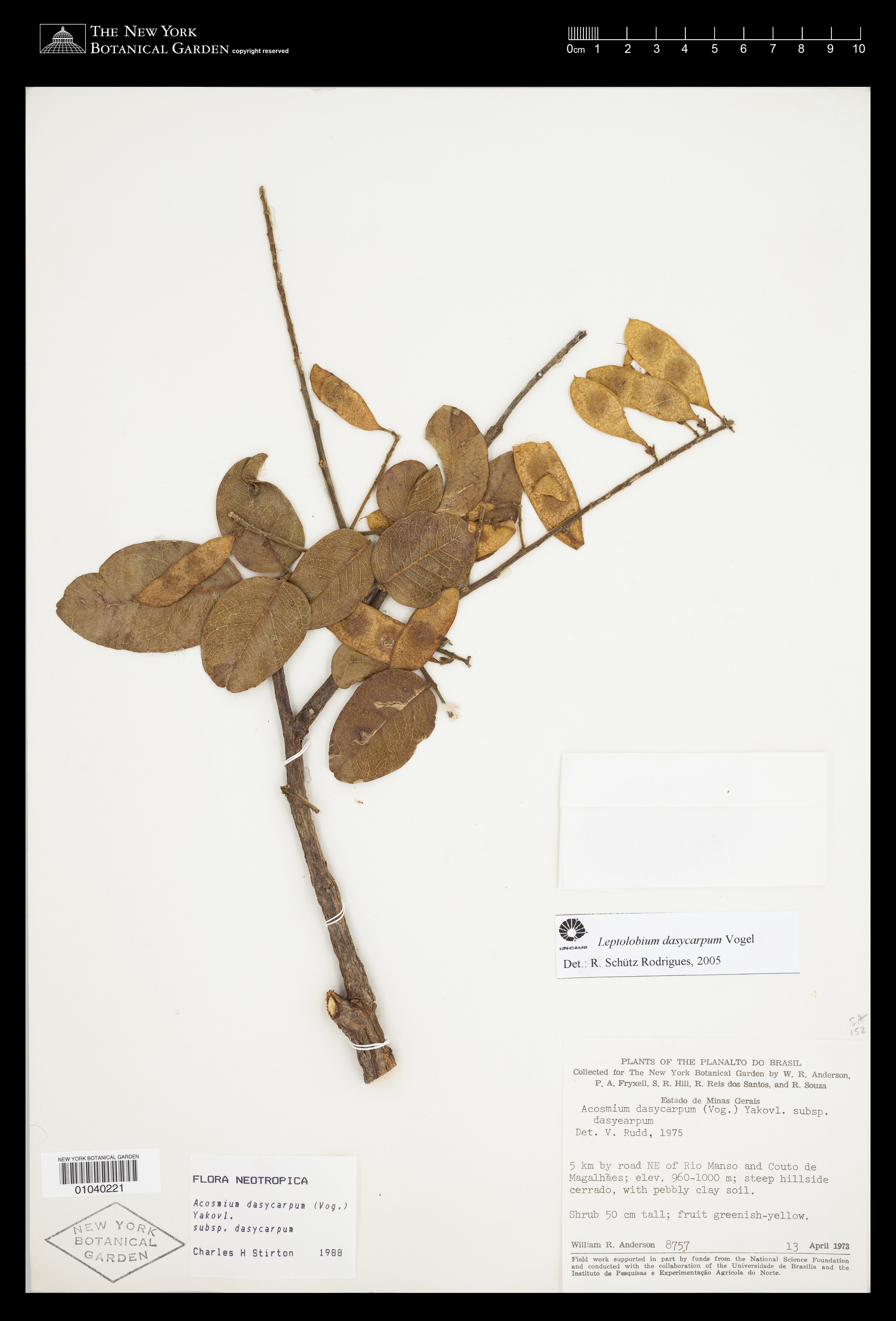Leptolobium dasycarpum Vogel
Rights: Rights reside with creator, otherwise property of NYBG.
-
Filed As
Fabaceae
Leptolobium dasycarpum Vogel -
Collector(s)
W. R. Anderson 8757 with P. A. Fryxell, S. R. Hill, R. Reis dos Santos, and R. Souza, 13 Apr 1973
-
Location
Brazil. Minas Gerais. 5 km by road NE of Rio Manso and Couto de Magalhães.
-
Habitat
Steep hillside cerrado, with pebbly clay soil.
-
Description
Shrub 50 cm tall, fruit greenish-yellow. Phenology of specimen: Fruit.
-
Identifiers
NY Barcode: 1040221
Occurrence ID: 381063e8-ac25-430e-8ea5-7b5457a13643
-
Feedback
-
Kingdom
Plantae
-
Division
Magnoliophyta
-
Order
Fabales
-
Family
Fabaceae
-
All Determinations
Leptolobium dasycarpum Vogel det R. Schütz Rodrigues, 2005
-
Region
South America
-
Country
Brazil
-
State/Province
Minas Gerais
-
Locality
5 km by road NE of Rio Manso and Couto de Magalhães.
-
Elevation
Alt. 960 - 1000 m. (3150 - 3281 ft.)
-
Coordinates
-18.0348, -43.3833
-
Coordinate Uncertainty (m)
1000
-
Georeferencing Method
Online gazetteer. Coordinates for Couto de Magalhaes from CRIA, offset calculated as straight line on MANIS website.
-
Geodetic Datum
WGS84
-
Distribution
¥«§A Bits IL Sä®iÄafti^ui^ 3®S ir \4t PLANTS OF THE PLANALTO DO BRASIL Collected for The New York Botanical Garden by W. R. Anderson, P. A. Fryxell, S. R. Hill, R. Reis dos Santos, and R. Souza Estado de Minas Gerais Acosmitan dasycarpum (Vbg.) Yakovl. subsp. dasyearpum Det* V. Rudd, Ip® NEW YORK BOTANICAL GARDEN 01040221 ? w y] BOTANICA^ garden FLORA NEOTROPICA Acosaiaa dasycarpun (Vog.) Yakovl. subsp. dasycarpua Charles H Stirton 1988 5 km by road NE of WM Manso and ©onto de Magalhaesf elev. 960-1000 m; steep hillside cerrado, with pebbly clay soil* Stirub 50 cm tall; fruit greenish-yellow. William R. Anderson 875,7 13 April 1978 Field work supported in part by funds from the National Science Foundation and conducted with the collaboration of the Universidade de Brasilia and the Instituto da Pesquisas e Experimenta cao Agricola do Norte. 01040221


Please submit your comments about the specimen:
Leptolobium dasycarpum Vogel